Digital Poster
Neurofluids: Methods & Technical Advances
ISMRM & ISMRT Annual Meeting & Exhibition • 10-15 May 2025 • Honolulu, Hawai'i

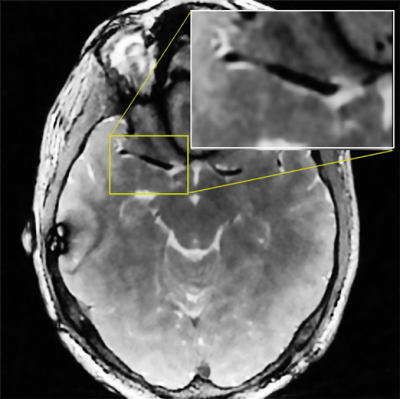 |
Computer Number: 145
4729. Simultaneous
Assessment of Intracranial Artery and CSF Pulsation Using 3D
Whole-brain Diffusion-prepared-bSSFP Cine MRI
C. Ni, X. Hou, K. Hashemizadeh, S-E Kim, Q. Wen, C. Yuan, X.
Ma
University of Utah, Salt Lake City, United States
Impact:
Our diffusion-prepared 3D black-blood cine MRI visualizes artery and CSF pulsation simultaneously, reduces scan time, and circumvents image registration. It allows for comprehensive evaluation of vascular function and CSF dynamics, potentially facilitating the early detection and monitoring of cerebrovascular diseases. |
|
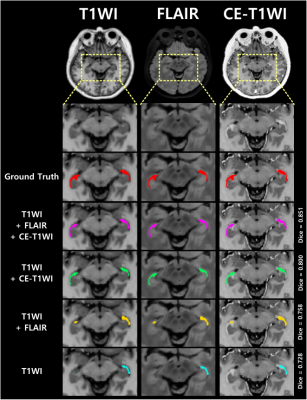 |
Computer Number: 146
4730. Optimizing
Choroid Plexus Segmentation using nnU-Net: Comparisons among
Multimodal MRI Input Combinations
E. Jeong, Y. Choi
Asan Medical Center, Seoul, Korea, Republic of
Impact: Our findings demonstrate that 3D-CE-T1WI
significantly improves the accuracy of CP segmentation. This
multimodal approach would facilitate more reliable
volumetric analysis in both research and clinical settings.
|
|
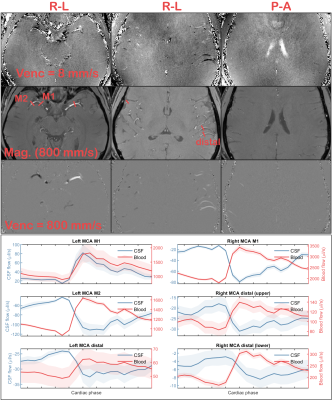 |
Computer Number: 147
4731. 4D-Flow
imaging of perivascular CSF and blood flow coupling using an
ultra-high performance head-only system
T. Vikner, L. Rivera-Rivera, Z. Yardim, B. Jolicoeur, K.
Johnson
University of Wisconsin, Madison, United States
Impact: The current approach shows that 4D flow imaging
of very slow CSF motion is feasible using high-performance
head-only systems. The proposed method and our preliminary
data could benefit our current understanding of human
blood-CSF flow relationships and neurofluid flow dynamics.
|
|
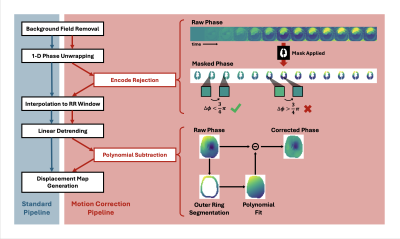 |
Computer Number: 148
4732. Correcting
the Effects of Patient Bulk Motion on DENSE Measures of Cardiac
Induced Brain Displacement
C. Doctor, L. Rivera-Rivera, L. Eisenmenger, S. Johnson, K.
Johnson
University of Wisconsin, Madison, United States
Impact: DENSE scans with and without induced motion were
acquired, to evaluate and correct the effects of patient
bulk motion. Our motion correction methods were effective in
correcting for both rotational and translational bulk motion
and demonstrated repeatability in test-retest analysis.
|
|
 |
Computer Number: 149
4733. Towards
reproducible perivascular space quantification: an open-source
perivascular space segmentation benchmark
M. van der Thiel, E. van Heese, B. van den Heuvel, V.
Molina, M. Jaramillo, J. Jansen, J. Bernal
Maastricht University Medical Center, Maastricht, Netherlands
Impact: The efforts of the PVS repository team will
establish an open-source platform for software code related
to PVS quantification, minimizing duplicate development,
enhancing reproducibility, and providing a benchmark for
future development and comparison of segmentation methods.
|
|
 |
Computer Number: 150
4734. Investigating
the Influence of CSF on Diffusion Characteristics in the
Parasagittal Dura
C-H Liao, Y-Y Cheng, C-W Chen, C-H Hsieh, S-L Peng, H-C
Chang, S-C Lin, Y- Lee, C-C Lin, C-W Lin, Y-J Liu
Feng Chia University, Taichung, Taiwan
Impact: Given that DWI can be utilized to assess the
circulatory condition of the parasagittal dura, our study
investigates the influence of CSF on the diffusion of the
parasagittal dura using both FLAIR-DWI and conventional DWI
across low and high b-values.
|
|
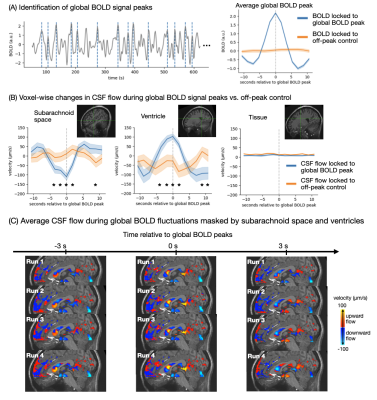 |
Computer Number: 151
4735. Cerebrospinal
Fluid Flow is Locked to Spontaneous BOLD Signal Fluctuations
in the Subarachnoid Space and Ventricles

D. Chen, F. Wang, J. Polimeni, Z. Dong, L. Lewis
Massachusetts Institute of Technology, Cambridge, United States
Impact: Using a novel technique obtaining simultaneous
CSF flow and BOLD signals, we observed significant CSF flow
changes in subarachnoid space and ventricles during
spontaneous BOLD fluctuations, establishing the role of
low-frequency hemodynamics in driving whole-brain
directional CSF flow.
|
|
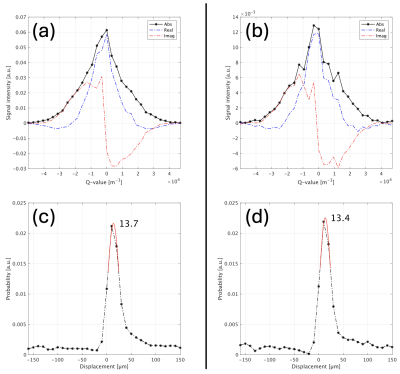 |
Computer Number: 152
4736. Effect
of Cardiac- and Respiratory-driven Tissue Motion on Microscopic
Velocity Measurement of Neurofluid based on Complex-valued
Propagator
Y. Kobayashi, K. Murayama, S. Yatsushiro, K. Watanabe, K.
Kuroda
Tokai University, Kanagawa, Japan
Impact: The results implies that the QSI-based
quantitative visualization of neurofluid velocity is
feasible even under pulsatile tissue motion occurring in the
brain. Such quantitative technique will make one step
further to elucidate the mechanism of neurowaste clearance
system.
|
|
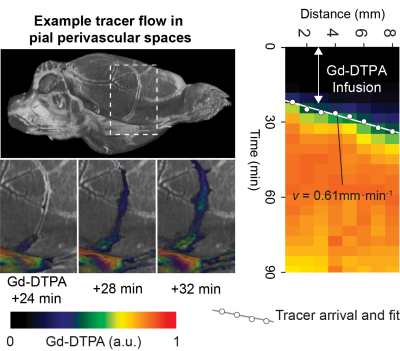 |
Computer Number: 153
4737. Perivascular
cerebrospinal fluid inflow matches interstitial fluid efflux in
anesthetized rat brains
K. Mortensen, T. Lilius, M. Rosenholm, B. Sigurðsson, D.
Kelley, M. Nedergaard
Hvidovre Hospital, Hvidovre, Denmark
Impact: Our novel CSF inflow measurement method
underscores a probable connection between brain waste
clearance and cerebrospinal fluid inflow. It provides a
quantitative platform for future biomarkers in both
preclinical and clinical investigations of brain waste
clearance and CSF circulation.
|
|
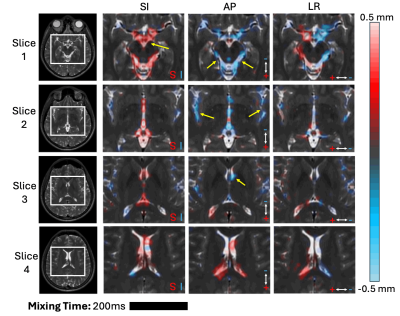 |
Computer Number: 154
4738. Assessing
Slow Cerebrospinal Fluid Flow Dynamics with Displacement Encoded
MRI
E. Karasan, M. Lustig
UC Berkeley, Berkeley, United States
Impact: This study demonstrates the potential of DENSE
and DiSpect MRI to capture slow CSF flow dynamics, offering
a valuable tool for detailed studies of CSF clearance
mechanisms. This approach could enhance understanding of
neurological conditions linked to brain clearance.
|
|
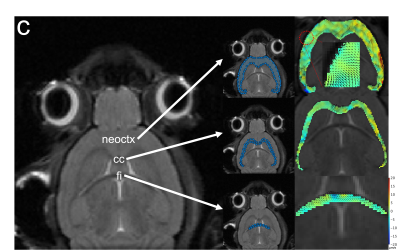 |
Computer Number: 155
4739. Visualization
of Neurofluids Movement in Mouse Brain Parenchyma by Q-space
imaging
K. Murayama, Y. Kobayashi, K. Watanabe, S. Yatsushiro, K.
Kuroda
Tokai university, Kanagawa, Japan
Impact: The regular movements of water molecules of a
1-10 μm/s were observed in the corpus callosum and fimbria
in the brain parenchyma, indicating that it may be
associated with cerebrospinal fluid, which is thought to
move along white matter tracts.
|
|
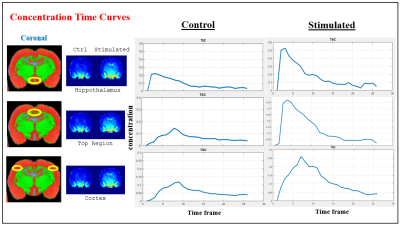 |
Computer Number: 156
4740. Changes
in Cerebrospinal Fluid Dynamics in the Whole Brain with
Ultrasound Pulsed Stimulation: A Feasibility Study
T. Rafiq, T. Choi, H. Lee, R. E. Yoo, S. H. Choi, J. Park,
J. Park
Sungkyunkwan University, Suwon, Korea, Republic of
Impact: This study highlights enhanced CSF dynamics over
the whole brain in rats with the LIFU-induced stimulation,
potentially facilitating waste clearance in glymphatic
system.
|
|
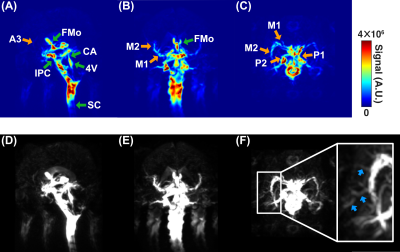 |
Computer Number: 157
4741. Cerebrospinal
Fluid Flow within Ventricles and Perivascular Subarachnoid Space
Evaluated by Velocity Selective Spin Labeling MRI
Y. Wu, F. Xu, D. Zhu, A. Li, K. Wang, Q. Qin, J. Xu
Johns Hopkins University, Baltimore, United States
Impact: This study underscores the potential of VSSL MRI
as a non-invasive tool for investigating CSF dynamics in
both PVSAS of arteries and ventricles, offering significant
insights into CSF circulation in both healthy and
pathological conditions.
|
|
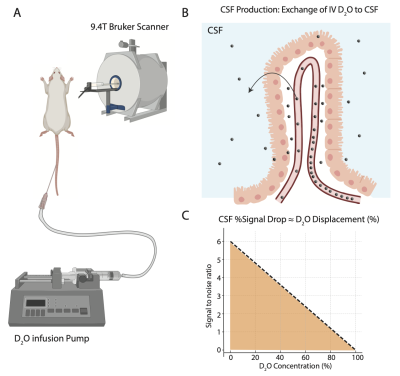 |
Computer Number: 158
4742. Indirect
Deuterium Displacement Imaging for Non-Invasive High-Resolution
CSF Production Mapping
D. De, N. Bateman, A. Nazeri, S. Pan, J. Quirk, J. Strahle
Mallinckrodt Institute of Radiology, Washington University School of Medicine, Saint Louis, United States
Impact: Deuterium displacement MRI enables precise,
non-invasive mapping of cerebrospinal fluid (CSF)
production, advancing neurofluid disorder research. It
enhances understanding of CSF dynamics and neurotoxin
clearance, especially in brain regions associated with
neurodegenerative diseases.
|
|
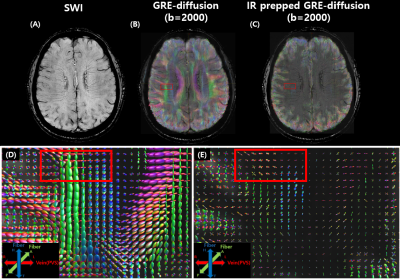 |
Computer Number: 159
4743. Imaging
glymphatic flow: Initial results using inversion-prepped
gradient recalled echo (GRE) diffusion imaging
S-H Oh, K. Sakaie, G. Lee, S. Jones, M. Lowe
The Cleveland Clinic Foundation, Cleveland, United States
Impact: We present a new approach to image the
glymphatic system. With further development, early detection
and evaluation of intervention strategies for a broad range
of neurodegenerative diseases may become possible.
|
|
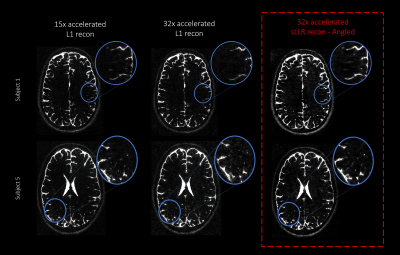 |
Computer Number: 160
4744. Highly-accelerated
CSF-STREAM: two-fold faster CSF-mobility and FA measurement in
PVS, via Locally Low Rank reconstruction
M. Debiasi, M. J. van Osch, Y. Dong, L. Hirschler
C.J. Gorter MRI Center, Radiology, Leiden UMC, Leiden, Netherlands
Impact: The improvement in acquisition speed makes CSF-STREAM
more suitable to fit into scanning protocols including
patients. Together with the improvement in the
reconstruction, we made CSF-STREAM a powerful, contrast-free
sequence to study glymphatics in humans in-vivo.
|
The International Society for Magnetic Resonance in Medicine is accredited by the Accreditation Council for Continuing Medical Education to provide continuing medical education for physicians.